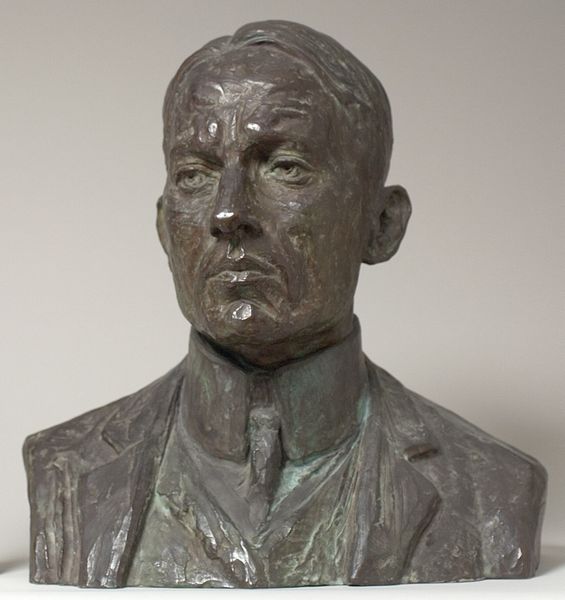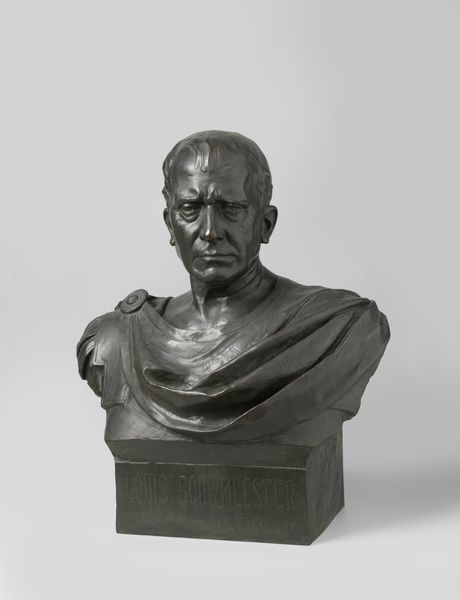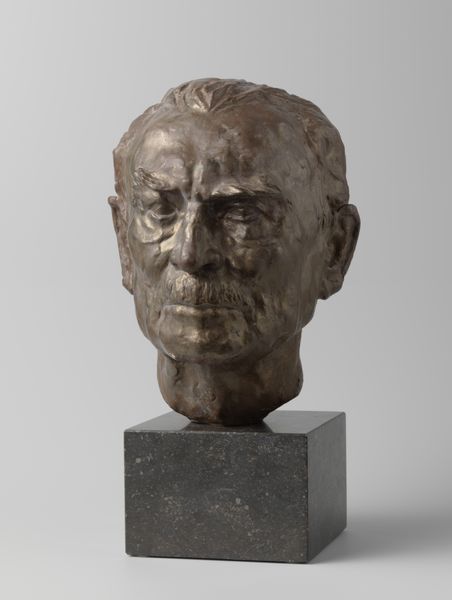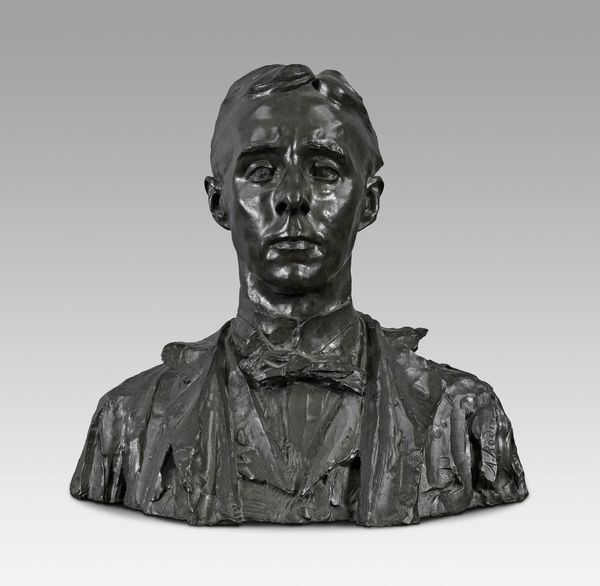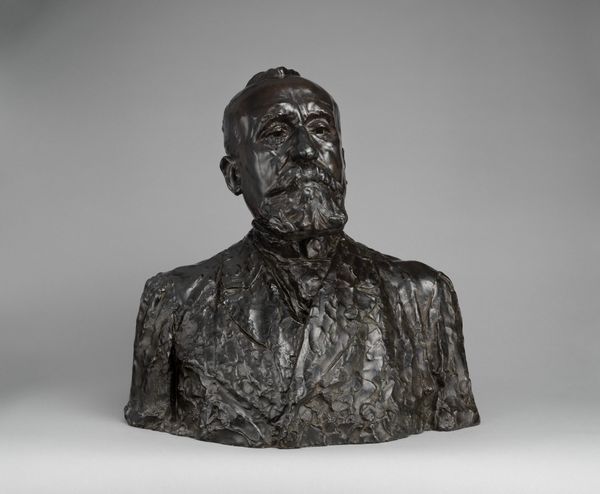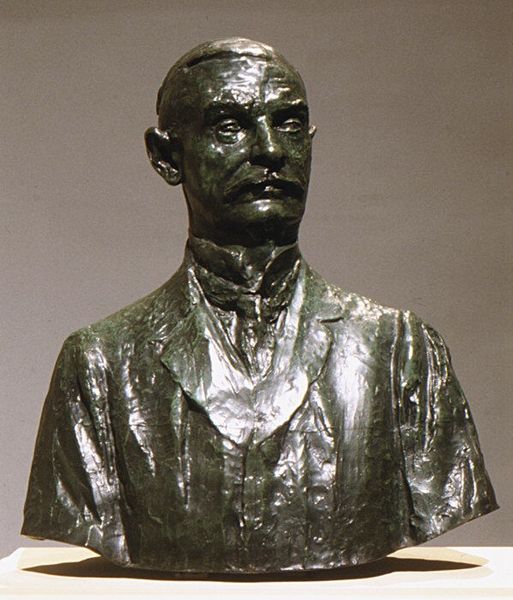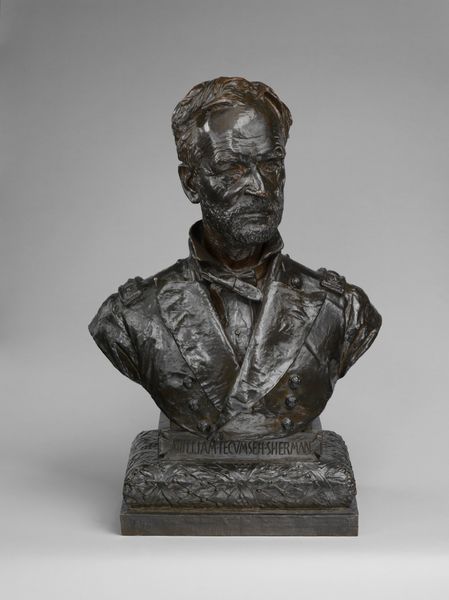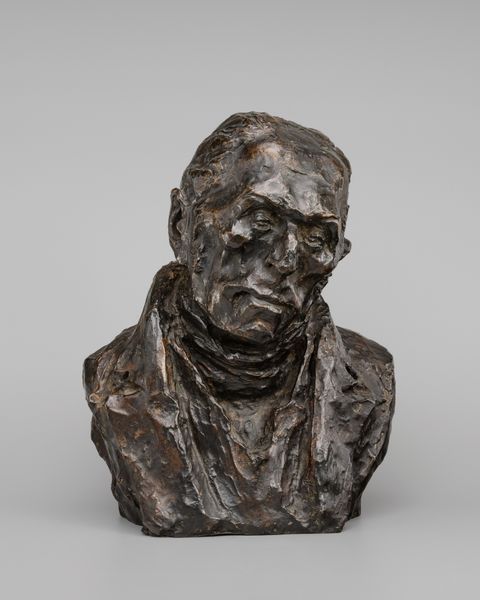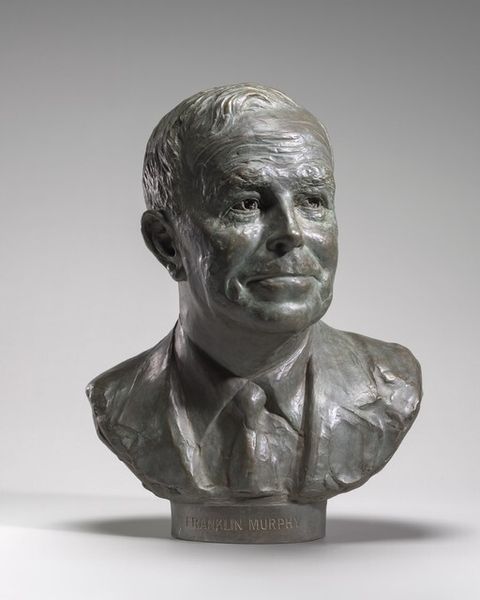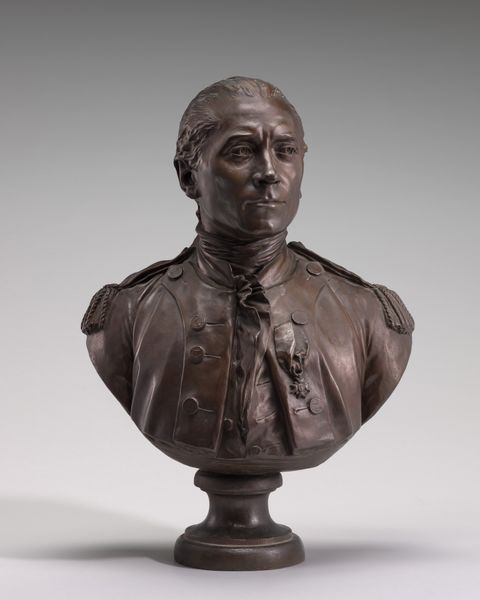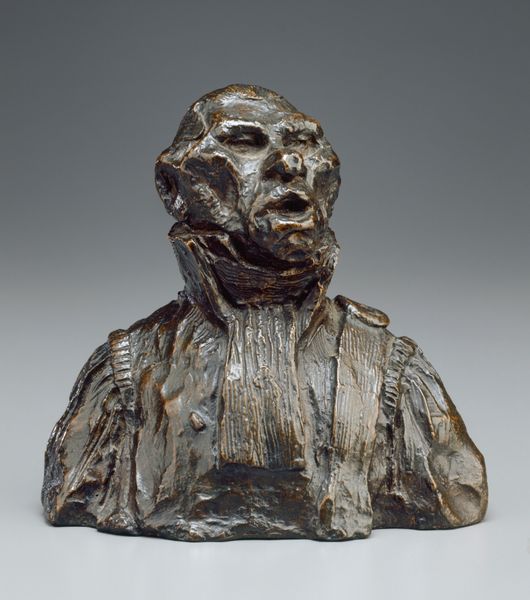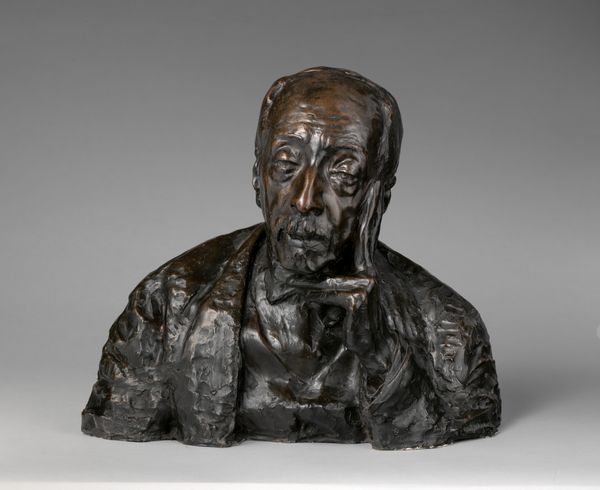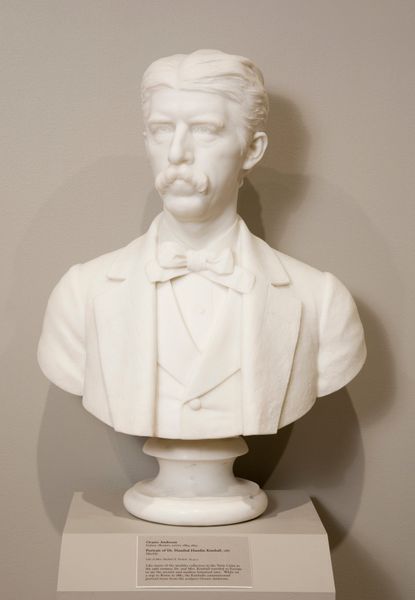
bronze, sculpture
#
portrait
#
sculpture
#
bronze
#
sculpture
#
academic-art
#
modernism
#
realism
Dimensions: overall: 63 x 51.5 x 29.5 cm (24 13/16 x 20 1/4 x 11 5/8 in.)
Copyright: National Gallery of Art: CC0 1.0
Curator: Here we have Auguste Rodin's bronze bust of Thomas Fortune Ryan, created between 1909 and 1910. Editor: What strikes me immediately is its intensity. The weight of the gaze, the pronounced brow... there's an undeniable power conveyed here. Is it admiration or something more complex? Curator: The dynamism certainly comes from Rodin’s treatment of the surface. Look at the modeling—the almost violent application of bronze gives it an energy that defies the conventional portrait bust. The light catches on the rough texture, emphasizing the materiality. Editor: Absolutely. Beyond the surface, bronze as a medium has its own weight. Bronze has been used for centuries to immortalize political leaders and men of power. There’s an echo of Roman authority here, wouldn’t you say? What does Ryan represent for Rodin, and for the viewers of that era? Curator: I think Rodin is deliberately playing with this tradition, undercutting it perhaps. The exaggeration of form—notice the size of the nose, the deep-set eyes—this isn't mere representation. It transcends realism to reach towards expressionism. There's a definite engagement with psychological depth beyond simply capturing the man’s likeness. Editor: You're right, the individual features do more than represent. I see shrewdness and perhaps a certain weariness reflected there. Bronze itself becomes an ambivalent symbol – power that corrupts, greatness intertwined with flaws... The shadows seem to enhance this duality. The folds of his clothes also look irregular, in contrast with the standard image of wealth at that time. Curator: I’d agree. Rodin utilizes this historical medium with the intention of portraying Ryan beyond just surface appearance. He invites the viewers to grapple with inherent conflicts between materialism, authority, and human nature, and invites engagement between sculpture, symbol, and subjective representation. Editor: Well, I leave with a new sense of Rodin's ingenuity—the symbolic power he invested into a medium traditionally used for glorification. Curator: And for me, an even deeper appreciation of Rodin’s technical prowess and philosophical considerations regarding identity, material, and surface texture.
Comments
No comments
Be the first to comment and join the conversation on the ultimate creative platform.
